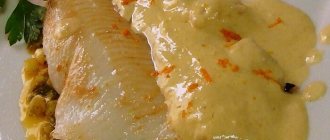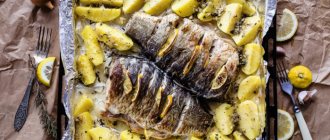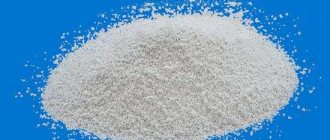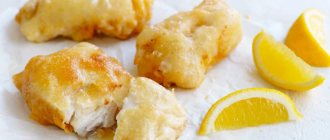Fish can not only be stewed, fried, steamed or baked, but also boiled. Those who know how long to cook fish have the opportunity to prepare a dish that is unusual in texture, aroma and taste. The main thing is to strictly follow the recommended holding times, and not try to determine the degree of readiness of the product by eye. For most types of product 25-30 minutes to reach the optimal state. But there are also extremes, so you shouldn’t be surprised by figures of 5 minutes or 2 hours.
The benefits of fish
Fish is a source of high-quality protein and is quickly absorbed by the body. If it takes about three or four hours to digest the meat, then the fish will “dissolve” in two. Therefore, it is recommended in dietary nutrition even for evening meals. Proteins keep you feeling full for a long time. The brain “gives a signal” not to store anything on the sides or butt.
I think many people have heard about the longevity of the people of Japan. They have virtually no problems with the thyroid gland. Excellent vision and smooth skin last until old age. Just look at the photo - cheerful, youthful people. Scientists have found that the cause of health was the consumption of large amounts of sea fish. The composition of your favorite product includes the following benefits:
- fatty amino acids Omega-3, Omega-6;
- vitamins A, D, group B;
- phosphorus;
- zinc;
- iodine;
- calcium.
Regular consumption of seafood reduces the risk of heart disease. The pressure stabilizes. The functioning of the immune system and brain improves. If you don’t want to suffer from dementia in old age, eat fish.
Iodine - saturates the thyroid gland, which has a huge effect on calorie burning and metabolism
Omega-3 fatty acid is a very healthy thing. Without it, the synthesis of other substances in the body is impossible. It maintains normal sensitivity of nerve fibers and participates in muscle contraction. The presence of beneficial Omega-3 acids will have a positive effect on hair, skin, and nails.
Secrets of cooking fish
In order not to spoil the taste of the fish, salting it before cooking is not recommended.
When preparing an appetizer or main course, fill the fish with hot water, using 2 liters of water per kilogram of prepared fish. To ensure uniform cooking, large carcasses are cut into pieces, and small fish are boiled whole.
Be aware that too much water will deteriorate the taste of the fish. Rapid boiling during cooking is also highly undesirable. If possible, use as little cooking water as possible.
Boil sturgeon and catfish in larger pieces, cutting them into portions before serving. These types of fish have a special delicate taste, so try not to use a large amount of spices and seasonings. Preserve its natural taste.
If you are boiling small fish whole, do not put it in very hot water. The temperature difference may cause the skin to burst, and the finished dish will lose its attractiveness. This will also affect the transparency of the broth. Dip the fish, cut into portions, into hot water, and place small fish in boiling water.
Hake and pollock
And finally, the last nuance that I would like to discuss within the framework of the topic: “How to quickly defrost fish.” Hake or pollock are the most readily available and cheap enough to be purchased frequently. And they are most often sold frozen. How to properly prepare them for the cooking process? We do the same as with other types of frozen cold-blooded animals, using, for example, running water. By the way, many still recommend using the natural, air method of defrosting, since it is preferable to quickly defrost fish - pollock or hake - naturally, then it does not absorb water into the muscle mass and does not release juices.
No matter how difficult it may seem, it is possible to quickly defrost fish, and each of us can do it, even a novice cook. True, in order for the planned dish to turn out flawless, it is important to properly defrost the product, preserving all its beneficial properties.
How to quickly defrost fish without a microwave?
Remember that strange crackling sound that occurs when you heat up some food in the microwave? It turns out that as a result of electromagnetic radiation, ionization of molecules occurs, in other words, food atoms gain or lose an electron. This completely changes its structure. In general, the destruction and deformation of food molecules negatively affects both its taste and the person. There is only one conclusion: we defrost fish without using a microwave oven.
The fastest way is defrosting in air. So, take the fish out of the refrigerator, put it in a bowl, and cover with cling film. The latter must be done so that after such defrosting the product does not turn out to be dry. This method is especially recommended for valuable fish and fillets. The only drawback of this method: you cannot defrost it in hot weather, otherwise, due to the fact that the fish will spoil, the whole dinner will be covered with a copper basin.
Is it possible to defrost fish in water?
Of course yes. To do this, place the fish in cold or slightly salted water. For 1 kg of fish there should be 2 liters of water and about 1 teaspoon of salt. This way, the salt will replenish the minerals that are lost during defrosting. As for time, small fish will become soft in 2 hours, large fish in 3-4 hours.
Defrost in the refrigerator
One of the most common methods is defrosting in the refrigerator. The air temperature in it should not exceed 5 degrees above zero. In general, we take the fish out of the freezer and place it on the bottom shelf. The fish will be ready no earlier than in 5 hours. This is an ideal option for those who need the fish to defrost only in the evening: take the fish out of the freezer, go to work, come back and cook a delicious dinner.
If there are no other options, how to defrost in the microwave?
This method is perhaps the fastest, but also unsafe for your health, however, now we will not talk about the dangers of a microwave. So, depending on the microwave power and the size of the fish, it will thaw in 10 or even 40 minutes. We put it on a plate. Select the required defrosting mode and turn it over during the defrosting process.
A huge fat disadvantage of this method: many connoisseurs of fish dishes believe that after such defrosting, the fish develops an unpleasant taste.
Do I need to defrost fish before frying?
Definitely yes, it is necessary. Otherwise, the fish will turn into boiled or something similar. And all this is due to the fact that during heat treatment it will give a large amount of water. This is at best; at worst, the fish may simply fall apart in the pan.
After defrosting, many famous chefs salt, pepper and add onions to the fish. Moreover, they leave it in this form for several hours and end up with a perfectly marinated dish.
How not to defrost fish?
We have already talked about the best and fastest way to defrost fish. It's time for advice on how not to defrost it:
- Frozen fish does not tolerate warm and hot water, the temperature of which is 35-40 degrees. In this case, it loses muscle juice, mineral salts, and also becomes flabby, stale and, undoubtedly, tasteless.
- If you do not intend to cook the entire piece at one time, it is better to cut the fish in advance. In addition, it is not necessary to defrost it to a soft state. Moreover, in this form it is more difficult to process and is not so juicy.
Today, most supermarkets put frozen products on their store shelves. This move allows you to increase the shelf life, while the beneficial properties of the product remain unchanged. However, in order to fully enjoy a delicious fish-based dish, it is important to defrost the raw materials correctly. Experienced housewives, through trial and error, have developed effective methods that will help carry out the procedure without compromising quality. Let's look at the important aspects in order and give recommendations.
Boiled pike perch
Even before cooking, I assumed that this would be a very dietary dish. But my wife insistently asked me to cook more, so I cooked it for everyone. In fact, I can only recommend it to patients on a diet. But for healthy people it’s a little bland. As a result, I ate the pike perch in splendid isolation, I must admit, with pleasure.
Summary:
Already in the hospital I gained additional knowledge about dietary nutrition for gastrointestinal patients. As I assumed, you can only boil or steam non-greasy white fish. This was also shown by my experiment with herring, which I do not regret at all. I will continue to try other types of boiled fish. Bon appetit!!!
Duration of boiling fish depending on the type
Each type of fish, as in the case of meat, requires an individual approach. If bream and sturgeon are cooked for equal periods of time, one of the products, and perhaps both, will be hopelessly spoiled. It is better to follow the recommendations of experts on how to properly cook fish, and not do questionable experiments with it:
- Smelt. It should be cooked for no more than 5 minutes. By over-resting the component, there is a risk of getting very tough meat.
- Pollock, mackerel, capelin and catfish reach the desired state in 8-12 minutes.
- To boil pink salmon (and other red fish with a similar texture), trout or pike perch, you will have to spend up to a quarter of an hour.
- Cod, herring, sterlet and flounder are cooked until cooked within 15-20 minutes. Bream and freshwater pike are processed a little longer.
- Hake and salmon are boiled for at least 25-30 minutes. Carp, cut into small pieces, is cooked for the same amount. But a whole carp will cook for about 45 minutes.
- Sturgeon takes the longest to cook. Even cut into portioned pieces, it will be ready within 1-2 hours, depending on the size of the pieces.
To determine whether the product is ready, you need to try to separate its fins from the carcass. If they come off easily, the component has reached the desired state.
Choosing a quality frozen product
When purchasing industrially frozen fish, choose a quality product. Blast-frozen fish, dry or wet, retains its properties during thawing and loses a minimal percentage of its weight. You can recognize which product is of high quality by the following characteristics:
- solid, and not in a block of ice with the dry method of freezing, covered with a thin layer of ice - with the wet method;
- The fish's eyes are clear, not cloudy.
When choosing a frozen product, you should also pay attention to the following points:
- Do not buy fish for future use to avoid a repeat defrosting cycle. It is preferable to choose medium-sized fish or fillets.
- Before purchasing, evaluate the quality of the fish to the best of your ability. There should be no stuck pieces of fish or ice crystals inside the package, but a thin ice glaze is allowed.
Signs of quality frozen fish are a pleasant natural smell, clear eyes, red or pink gills.
Basic recommendations for boiling fish
It doesn’t matter whether you need to boil pink salmon or bream, you should always follow the basic rules for working with the component. Only in this case can you count on the fact that in the end everything will turn out tasty and healthy
- It is better not to salt the workpiece and water until the product is ready. Otherwise, the meat will turn out a little dry.
- It is recommended to cook both river and sea fish in a pan without a lid, so you should not use a slow cooker or double boiler to prepare this product.
Tip: Before cooking fish the traditional way, you should consider cooking it in vegetable broth. With this approach, even ordinary bream can be turned into an exquisite delicacy. And if you use saffron in the process of preparing the broth, the finished dish will have an amazing color and subtle aroma.
- The water should not be allowed to boil or bubble strongly, as this can lead to deterioration in the texture of the meat and even destruction of pieces or the carcass.
- Small fish are usually cooked whole, while large ones are cut into pieces. If this is not done, the component will not be welded evenly.
- To save time and make the meat juicy, pieces of fish are placed in boiling water. You can’t do this with small carcasses; temperature changes can cause the skin to burst.
- To boil the product tasty, you need to take a minimum amount of water. An abundance of liquid can greatly deteriorate the quality of the component, especially if you need to boil red fish.
- If within a few minutes after the start of cooking the broth becomes cloudy, the product must be removed and the liquid drained. Re-place the component in fresh boiling water and continue processing.
It is necessary to take special care when boiling representatives of the sturgeon and catfish families. It is better to cut them into large pieces and use a minimum amount of seasonings and spices.
https://youtube.com/watch?v=9Qc_1wQUJIs%3Frel%3D0
Cooking fish soup
A traditional Russian dish is ukha, the preparation of which also involves boiling fish. There is nothing complicated in this dish, the main thing is to know how to cook it. You can use different fish. The most delicious is the collected fish soup; large fish are used for it and small fish are used especially for the broth. Small fish do not need to be scaled, but only gutted. The main thing is not to forget to strain the finished broth. For fish soup or fish soup, the head and fins from large fish are often used. The head takes a little longer to cook than the fish itself. It is best to cook the head in a separate pan, and the finished broth should be strained through a sieve or cheesecloth.
Small fish are usually removed from the fish soup, but you can clean it from the bones and rub it through a sieve in the fish soup, then the soup will be even richer and thicker. This type of ear is often called double. It is best to season the soup with black peppercorns, bay leaves and dill.
Recipe 3. Fish boiled in milk with onion sauce
Ingredients
- half a kilogram of fish fillet;
- flour – 30 g;
- milk – 750 ml;
- butter 60 g;
- onions - four pcs.
Cooking method
1. Wash the fish fillets under the tap and dry with napkins. Place in a deep saucepan and fill with boiled milk. Boil the fish until done.
2. Peel the onions, place the whole heads on a baking sheet and bake in the oven. Grind the prepared onion through a sieve. Add butter and fried flour to the onion puree. Stir and pour in a little boiling water. Place on the fire and cook until the sauce thickens. Season it with sugar, lemon juice and salt.
3. Remove the fish from the milk, transfer it to a dish and pour onion sauce over it. Serve with boiled potatoes.
Research by English scientists
After several years of research, English scientists have proven that those who regularly consume boiled fish instead of fried fish have a 30% reduced risk of developing cardiovascular diseases. Fried fish, which we all love so much, contains carcinogens.
Partial avoidance of fried foods will especially benefit those over 50. Boiled fish contains more polyunsaturated fatty acids, which improve immunity, cleanse blood vessels, and also improve permeability. By eating a small portion of boiled fish every day, each of you can also protect yourself from heart disease. Scientists do not force people to give up fried fish completely, arguing that even partial replacement of fried fish with boiled fish will be beneficial.
How to boil fish
You will need
- onion - 1 head;
- carrots - 1 piece;
- parsley root - 1 piece;
- vinegar 3% - 1 tablespoon or juice of half a lemon;
- black peppercorns
- Bay leaf
- salt;
- fresh greens.
Instructions
Fill small fish and heads with fins with water and cook. As soon as the water boils, skim off the foam and reduce the heat so that there are no obvious signs of boiling. Simmer the fish broth for half an hour, then strain it. Squeeze the remaining fish, along with bones and scales, into the broth through cheesecloth, discard everything else and return the broth to simmer on the stove.
Cut large fish into portions, leave medium-sized fish into small carcasses. Peel the carrots, onions, and parsley root. Chop the onion finely, carrots and parsley root into small cubes. Place them in boiling broth or water if you did not cook small fish separately.
Probably each of us loves boiled fish dishes. It is not only tasty, tender, aromatic and healthy, but also ideal for dietary nutrition.
You will need
- Bay leaf
- salt
- black peppercorns
- parsley roots.
Instructions
Pour some cold water into the pan, put the fish in it and put it on high heat. When boiling, the fire must be reduced.
note
There is no need to cook the fish for a long time; it will become tough and tasteless. You should not put fish in boiling water, as it may burst; it is better to put it in warm water. When choosing fish, you need to pay special attention to freshness. In this case, the gills should be red, the eyes and scales should be clean and shiny.
Helpful advice
When cooking fish, you should not pour a lot of water; the less, the tastier it will be. If you want to retain more nutrients in the finished fish, it is better to steam it. Do not pour out the broth; it will be quite useful for making fish soup or sauce. To clean the scales well, immerse the fish in hot water for 1-2 minutes.
www.kakprosto.ru
In a slow cooker
To quickly make a healthy and low-calorie dish, you can use a slow cooker. What do we have to do:
- Prepare the carcasses. Clean, gut, remove all unnecessary parts. Frozen fish must first be thawed in the correct way.
- Cut them into small steaks. Place on the bottom of the bowl. Salt, pepper, add a bay leaf. Cooking time is a quarter of an hour. You need to set the “steam” or “steam cooking” function.
You can also pour water into the multicooker bowl. Place a special sieve on top, with the help of which the products are steamed. The lid is tightly closed and the fillet cooks for 25 minutes. In this case, all the benefits of the product will be preserved. Almost all vitamins and minerals will be preserved in its composition.
The finished fish will be denser than when cooked in a pan. It is placed on a serving plate. Can be placed on lettuce or arugula leaves. Top with freshly squeezed lemon juice. As a side dish, you can cook rice or mashed potatoes with butter. This dish will be useful for adults and children, pregnant and lactating women, as well as for the elderly. The advantage of hake is also that it is not bony
Yandex pictures
How long to cook fish
Like any seafood, fish does not tolerate prolonged heat treatment. It becomes tough, loses its taste and attractive appearance.
The cooking time for fish depends on its type and the size of the pieces:
- portioned pieces of sturgeon are boiled for 1 to 2 hours;
- the carp is cooked for 45 minutes, and if you cut it into pieces - 25-30 minutes;
- hake - 25-35 minutes;
- boil the salmon for 25-30 minutes;
- freshwater predatory pike is cooked for 20-25 minutes;
- flounder, cod, sterlet and herring will be ready after 15-20 minutes of cooking;
- pike perch, pink salmon and trout cook very quickly - 10-15 minutes is enough;
- catfish and capelin are even faster - 10-12 minutes;
- pollock and mackerel - only 5-10 minutes;
- and the record holder for the fastest cooking time is smelt fish: 5 minutes is enough for it to be ready.
You can determine the readiness of the fish by its fins. If they come off easily, then the fish is ready.
Vitamins
| Vitamins | Quantity | Norm |
| Vitamin A | 12.8 mcg | 900 mcg |
| Retinol | 0.008 mg | ~ |
| Vitamin B1 | 0.077 mg | 1.5 mg |
| Vitamin B2 | 0.084 mg | 1.8 mg |
| Vitamin B6 | 0.128 mg | 2 mg |
| Vitamin B9 | 6.271 mcg | 400 mcg |
| Vitamin C | 0.26 mg | 90 mg |
| Vitamin E | 0.384 mg | 15 mg |
| Vitamin PP | 5.8874 mg | 20 mg |
| Niacin | 1.165 mg | ~ |
What can you cook
You can prepare various dishes from boiled fish. Don’t be afraid to experiment, because, having a certain neutral taste, fish can easily be combined with many foods: vegetables and flour products. If you decide to serve boiled fish as an independent product, then to add juiciness, it is recommended to use onion frying based on olive oil.
Some housewives even prefer to cook fish in oil, which ultimately resembles canned fish, but do not forget that such a dish is considered high-calorie. If you need to prepare a fairly satisfying and less calorie dish, we recommend using Polish sauce.
Procedure for cooking fish
To cook fish, it is gutted, cleaned of entrails and scales, gills are removed, cut into pieces and dipped in boiling water (to which salt and various seasonings are added in advance). The broth is brought to a boil again, and then the heat is reduced so that the liquid barely boils. Why does fish need to be salted right away? Adding salt prevents the product from boiling too quickly. An exception to the rule about adding salt is when boiling sturgeon with dense flesh: this fish does not boil over, but can lose too many nutrients in salt water. Thus, when boiling sterlet and large sturgeon, they are salted at the end of the process.
The cleaning process can be avoided if you buy already gutted specimens or fillets. Many people prefer to cook the fish under the lid in a small amount of water, which covers the pieces of fish only halfway - simmer. If the taste of the fish itself is not very rich, it can be improved by boiling it in vegetable or even chicken broth, in milk or in water diluted in half with milk. To improve the taste, you can add carrots, parsley and celery roots, and onions to the water. An alternative option is to add a little cucumber pickle, a little dill or fresh sweet pepper to the water. Bay leaves and pepper are added only to fish whose natural smell is not liked by the cook.
Steaming retains more nutrients and flavor in the fish. For fillets, it is highly recommended, since the skin does not protect it from the aggressive external environment. If you have not yet purchased a double boiler, then you can take a regular saucepan, pour a little water into it (about a 5 cm layer), bring to a boil, put a colander on top, put fish in it, salted and sprinkled with your favorite spices, cover the colander with a lid and wait end of the process.
If the taste of boiled fish seems boring to you, and you don’t have enough enthusiasm for experimenting with broth and seasonings, the ready-to-eat product can be supplemented with both store-bought and.
Recipe 4. Stuffed mackerel, boiled in a bag
Ingredients
- three mackerel;
- spices for fish;
- large carrots;
- salt;
- bulb;
- gelatin – 10 g;
- processed cheese;
- two boiled eggs.
Cooking method
1. Wash the mackerel and dry it with napkins. Cut off the tails, fins and heads.
2. Cut the belly and remove the entrails. We make an incision along the back, remove the spine and ribs. We check the fillet for the presence of small bones; if necessary, remove them with tweezers.
3. Peel the carrots, wash them and chop them coarsely. Grate processed cheese and peeled boiled eggs into a bowl with carrots.
4. Peel the onion and finely chop it. Add to the bowl with the rest of the ingredients. Salt and mix well.
5. Pour gelatin into the mixture of vegetables, eggs and cheese. Mix again.
6. Cut off a piece of foil. Place the prepared mackerel fillet on a board, skin side down. Salt and sprinkle with gelatin. Spread a third of the filling and roll tightly. We stuff the rest of the carcasses in the same way.
7. Place two carcasses on foil. Place the third fish on top. Press down and sprinkle with gelatin again. Wrap the stuffed mackerel tightly in foil in the form of a roll. We wrap the edges. Place the roll in a plastic bag and tie it.
8. Boil water in a saucepan. Place the roll in the bag in boiling water and cook for forty minutes. Remove, cool, transfer to a deep bowl and leave the fish under pressure in the refrigerator for three hours.
9. Remove the bag, unwrap the foil and cut the stuffed mackerel into slices. Serve with fresh vegetable salad.
The nuances of boiling fish
Of course, when boiling bream, mackerel or some delicious type of fish, there are specific features and recommendations, but there are general nuances for preparing a boiled product:
- Products with a delicate, unexpressed taste are not recommended to be richly flavored with seasonings and spices. It is enough to put white roots (parsley, celery) into the broth and add salt to the finished dish.
- But bream, carp or silver carp should be seasoned with pepper, bay leaf, carrots and onions. The already rich taste of meat will become more spicy and pronounced.
- Fish that initially has an unpleasant odor can be saved with cucumber brine. Just add a little liquid to the broth during the cooking process.
- If for some reason the finished product does not need to be served yet, it can be left in the broth, however, no more than half an hour.
The broth remaining after cooking the products can be strained several times until transparent, frozen and later used in making sauces. Just before pouring it into molds, you should add a little salt to the liquid.
https://youtube.com/watch?v=z703sIrBO1g%3Frel%3D0
Which spices to choose?
Each type of fish has its own cooking nuances. So, for example, most types of red fish should be cooked in cold water, and the cooking time should be counted from the moment of boiling. To add flavor when cooking pink salmon, add bay leaf, celery and onion to the broth. Thyme and rosemary are considered classic herbs that enhance the taste of fish, especially sea fish (dorado, sea bass). Lemon is an ideal fruit. To add a spicy taste, garlic, onion and paprika (sweet or hot) will do.
General recommendations
There is no clear technology for preparing boiled fish. And it is almost impossible to say how this is done correctly. Each housewife has her own cooking secrets: some use a mesh for this, others resort to a double boiler, and still others try to find a middle ground during cooking that allows them to avoid overcooking.
But we cannot ignore the basic requirement for the quality of the product: the fish must boil at least a little (for this it is better to use low heat).
It is necessary to plan your actions in the process of preparing the dish in question, starting from the desired end result (you are planning to make a casserole, separating the bones during boiling, you are pursuing the goal of getting a boiled fillet for a salad, or you need whole pieces of fish for dinner). If you still need whole pieces of boiled fish, then it is quite acceptable to put the fish in cold water. The main thing is that the fish is cut into fairly large pieces.
It is not recommended to cook small fish in this way, as they will begin to fall apart as soon as the water starts to heat up.
As for the amount of water, it should lightly cover the fish so as not to provoke preliminary boiling (a small amount of water provides the fish pieces with “rest”, due to this it is possible to avoid unnecessary deformation). Thus, it is possible to cook fish even with gills. But in the case of fish soup, this method will be unacceptable, and the gills will be superfluous. Here we immerse the fish either at the end of cooking or at the very beginning, but after boiling it a little, it will be necessary to completely remove it from the future broth so that it does not completely spread out.
Fillet
How to quickly defrost fish fillets? After all, all the recommendations of experienced chefs boil down to the fact that it is categorically impossible to thaw fillet or minced meat with water. In this case, they say, both the beneficial properties and the appearance of the semi-finished product are completely lost. What can be advised in such cases? Well, first of all, follow the rules: defrost the fillet at the very bottom of the refrigerator, where the temperature is highest. But this process may take 3-4 hours. You can, of course, fry, for example, unfrozen fillets (and even professional chefs sometimes do this). But at the same time it can shoot very strongly (the water defrosts and falls on the boiling oil). And the appearance of the prepared product suffers: it wrinkles and dries out as a result, and you can’t roll it in flour or breadcrumbs. So you can do this using physical laws, that is, increase the ambient temperature. Then the defrosting process itself will speed up. Place a covered bowl of fish near a heated stove, for example. And in the hot summer, take the fillet (covered from insects!) to the balcony, where the temperature is higher than in the kitchen. By the way, the following folk method of defrosting is also associated with the laws of physics.
Fish selection
Freshness of food is, of course, always important, but in the case of fish this rule doubles its strength. Any fish, if it is fresh, should not have an unpleasant odor, and the eyes should be bright, without clouding. The meat should be firm and not separated from the bones, and the gills should be pink. If you have not had the chance to catch red fish yourself and you choose it at the market, then keep in mind that fresh red fish should have pink mucus on its scales. The inside of the meat should be pink and without bruising. In addition to the above, it is worth considering that some fish are not entirely suitable for cooking. for example, you can cook it, but most likely the meat will fall apart.











